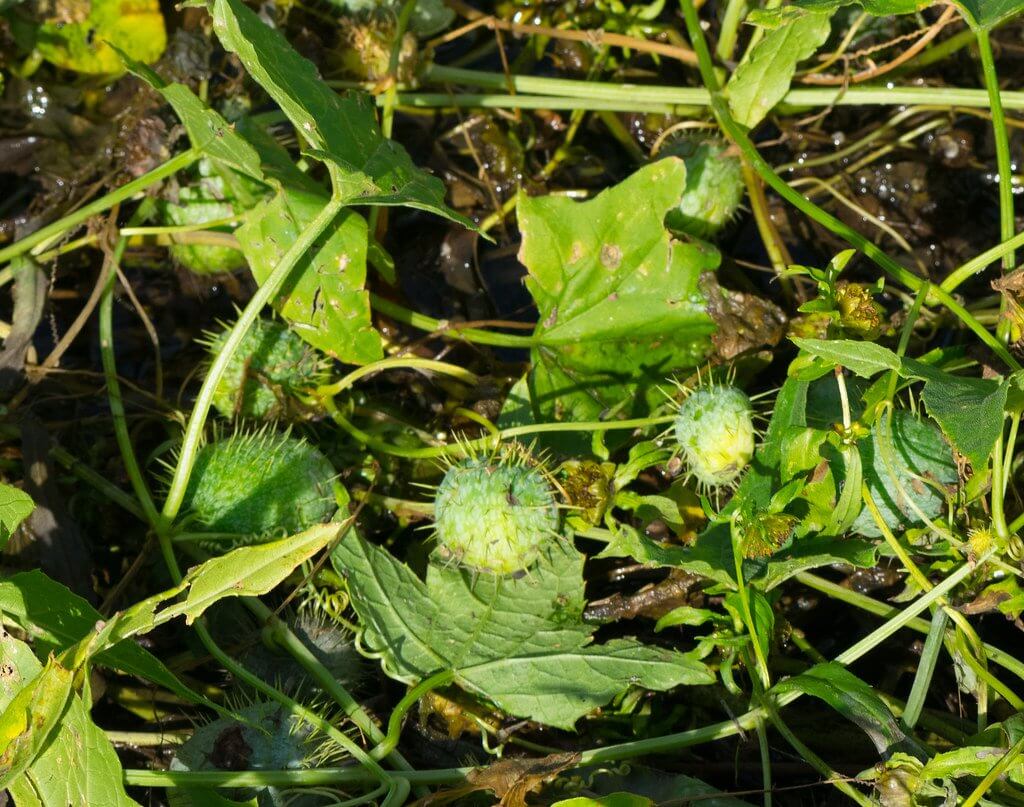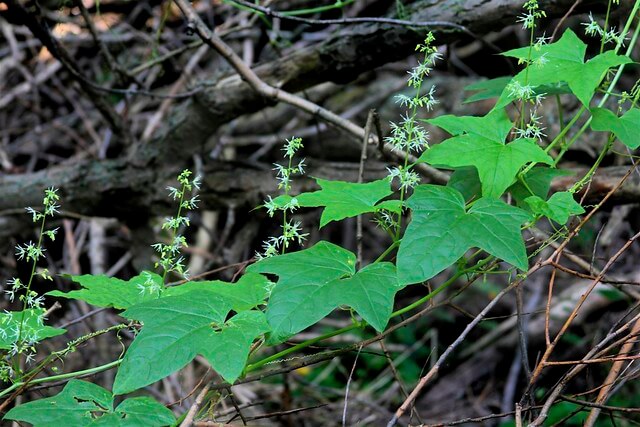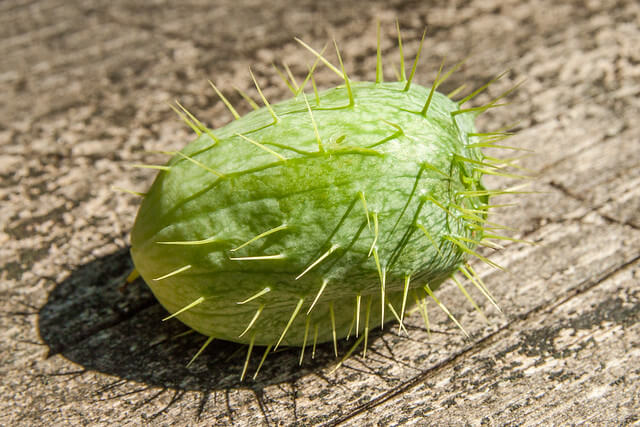
(Source: Joshua Mayer/Flickr)
Wild cucumber (Echinocystis lobata) is an annual vine plant that belongs to the cucumber family (Cucurbitaceae). Wild cucumber is native to North America. It’s well known for its prickly fruits, hence its other name, prickly cucumber.
Also, did you know? There’s another plant that’s also called wild cucumber. The plant’s scientific name is Cucumis anguria. It belongs in the same family as Echinocystis lobata, but it belongs in a different genus. They make look similar with their prickly, rounded fruits, but they’re entirely different plants. Cucumis anguria is more widely known as West Indian cucumber, while Echinocystis lobata is referred to as wild cucumber.
Edibility and culinary use
Unlike its similarly named cousin, this species of wild cucumber doesn’t produce any edible fruits. Its fruits aren’t fleshy and instead consists of two seed chambers. Wild cucumber fruits act solely as a seed container where seeds will grow and ripen. In fact, only the roots of this plant are considered edible. You may not be able to eat it straight as it tastes bitter, but you can boil them to make herbal tea. Note that this herbal tea is very bitter, so you might want to add some sweetener to make it more palatable.
Health benefits

(Source: Dan Mullen/Flickr)
This plant has very limited medicinal uses. But despite that fact, wild cucumber has been a part of folk medicine for hundreds of years. As mentioned earlier, you can boil the root of wild cucumber to get a very bitter herbal tea. This herbal tea can help alleviate stomach problems, indigestion, nausea, chills, and fevers. Some researchers also believe that wild cucumber herbal tea can also treat rheumatism and kidney ailments. Then, you can also pulverize the roots and make it into a poultice. This wild cucumber poultice can help headaches and migraines.
Cultivation
Even though this plant has very limited culinary and medicinal uses, it still has other uses. For example, it’s considered a novelty decorative plant by most gardeners. Its fruits and leaves are regularly used in dried flower arrangements. Its large, patterned seeds are also used in artworks. Some people also have wild cucumber plants in their garden to attract certain wildlife, such as birds and small mammals, to their garden.
As a vine, this plant would look extremely attractive wrapped around your fence or a pergola. If you’re interested in cultivating wild cucumber in your own garden, then you’re in luck. This plant is relatively easy to grow. It can thrive in every type of soil, from light and sandy soils to heavy clay soils, as long as it’s moist and well-drained. Just make sure to plant it in a sunny location as it can’t tolerate shade. But here’s a little bit of warning, this plant grows very rapidly. Its vine can be as long as 30”. So, you should prune your plants regularly to prevent it from taking over your entire garden.

(Source: Conrad Kuiper/Flickr)
You should be able to buy wild cucumber seeds from local plant nurseries or from the internet. Sow the seeds indoors in spring after the last frost date. They will germinate within one or two weeks. Plant them in their permanent place once the seedlings are big enough to handle. Young wild cucumber vines grow very rapidly, use stems, branches, or wire to support the vines. The flowers will start blooming by midsummer. Once their fruits ripen in the fall, the plants will start dropping its seeds. By that point, the plants will die off. Then, the dropped seeds will germinate and grow by the next spring.
Cautions
This plant is completely safe to consume. Just note that it may look similar to its cousin, the West Indian gherkin. While that plant’s roots are also fine to consume, they don’t have the same medicinal properties that wild cucumber roots have.
Conclusion
Wild cucumbers don’t have a lot of culinary and medicinal uses; you can only consume herbal tea made out of this plant’s roots. But despite that fact, wild cucumbers are still a lovely ornamental plant. Its long vines, white blooms, and prickly fruits will definitely add some variety to your garden.
---------------
Writen by Cornelia Tjandra
Cornelia is a freelance writer with a passion for bringing words to life and sharing useful information with the world. Her educational background in natural science and social issues has given her a broad base to approach various topics with ease. Learn more about her writing services on Upwork.com or contact her directly by email at cornelia.tjandra@gmail.com
Many of our readers find that subscribing to Eat The Planet is the best way to make sure they don't miss any of our valuable information about wild edibles.
See our privacy policy for more information about ads on this site







2 Responses
Hey there
I had a quick question.
What year was this article published? I need this information for my assignment for physical geography class.
Thank you so much for your time!
It was published in 2019